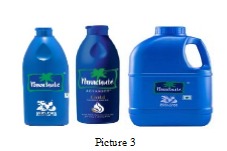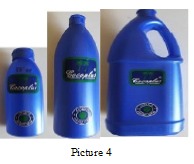
Keywords: Trade Dress, Artistic work, Passing-off, Distinctiveness, Goodwill,
Introduction
In this modern era of digital economy, a brand’s distinctiveness and visual identity plays a huge part in the consumer’s choice. The recent ruling of the Bombay High Court in the case of Marico Limited v. Zee Hygiene reinforces the principle of protecting any infringement of trade dress and brand distinctiveness. The court while granting an interim injunction emphasized on the fact that visual branding elements of any product of a registered trademark are protected intellectual property.
The court clarified the fact that registration of a trademark per-se doesn’t immunize a defendant from liability, if actual usage of that mark is prima facie a dishonest imitation of a prior used trademark/trade dress. The court while granting interim relief to the plaintiff held that the deceptive similarity between packaging of both the products is likely to not just harm the commercial right of the plaintiff but will create confusion among the public at large.
Brief facts and issue involved
Marico Limited, the plaintiff alleged infringement of its registered trademarks “Parachute, Parachute Advanced and Parachute Jasmine” and copyright in artistic work such as flag device, image of broken coconut (refer to picture 1) against the Zee Hygiene’s trademark “Cocoplus” hair oil product and its imagery (refer to picture 2). As per the plaintiff the distinctive packaging of its product with a blue shed, flag device, coconut tree image and the broken coconut with oozing oil device (refer to picture 3) constitute artistic work protected by copyright and registered trade dress that possess goodwill and reputation.


Zee Hygiene’s brand “Cocoplus” product packaging style (refer to picture 4), was challenged by the plaintiff before the Court alleging that it was visually and structurally similar and a dishonest imitation of plaintiff’s artistic work involved in the packaging of its product. Plaintiff sought an interim injunction for trademark violation, copyright infringement and passing-off.

Trade dress protection under Indian Legal Framework
The general appearance or get-up of products or services prevalent in market are called its trade dress. Trade dress is not as such defined under the Trade Marks Act, 1999, though is covered under “packaging” and “overall appearance” as the courts in India place there emphasize on overall impression and public association in determining infringement of trade dress. The term “deceptively similar” defined under section 2(h) of the act relied by the courts while determining a trade dress infringement placing reliance that the resemblance is likely to deceive or cause confusion. The Delhi High Court in the case of Beiersdorf AG v. RSH Global Private Limited restrained the defendant to dealing with cosmetic products that are deceptively similar to plaintiff’s trade dress. the court in this case held that a prima facie comparison of both the products, when seen as whole is similar in nature.
Judicial findings
The court while establishing the infringement of plaintiff’s trademark/trade dress, place its reliance on the case of Colgate Palmolive Co. v. Anchor Health & Beauty Care Pvt. Ltd. where the Delhi High Court held that colour and shape of the product packaging can acquire distinctiveness and form part of trade dress. The court while rejecting the defendant’s argument of protection under registered trademark of his own held that the defendant deviated from his registered mark as the packaging in use is different from the one that is registered. The court relied upon the case of Siyaram Silk Mills Ltd. v. Shree Siyaram Fab Pvt. Ltd., where it was held that deviation from registered mark curtail the statutory protection of the defendant, also as per section 30(2)(e) of the act, only registered marks are protected and the marks in question were different from the registered “Cocoplus” this defense is liable to be rejected. The court emphasized the first glance test that the visual comparison of both the products packaging would likely confuse the average consumer. The court affirmed that “The trade mark is a whole thing. It is the overall impression from the look of packaging/container that determines deception”. The court while relying on the cases of Midas Hygiene Industries v. Sudhir Bhatia, and Hindustan Pencils Pvt. Ltd. v. India Stationery Products, dismissed the shield of delay and held that mere delay without acquiescence is not a bar to an injunction in case of infringement. The court while rejecting the claims of similarities being generic or coincidental held that the defendant’s deviation from its own mark showed dishonest intention and thus liable to be restrained. The court relied on Schering Corp. v. Kilitch Co. case where the Bombay High Court held that once dishonest adoption is shown, equity cannot protect defendant. The court while ruling that the balance of convenience lies in the favour of plaintiff and that if an interim relief is not granted, would cause irreparable harm and damages to the plaintiff, grants the interim relief. The court restrained the defendant, Zee Hygiene from using any packaging, label or mark similar to “Parachute and suffix” and reproducing plaintiff’s artistic work.
Conclusion
This is not the first time a court restrained someone from using someone else prior registered mark so why is this ruling so important. Because for brands with decades of market presence, goodwill and reputation this ruling is a light in disguise as it sets a clear precedent that even imitating packaging, colour combinations or background imagery, even without imitating the name, can amount to copyright and trademark infringement. The court while ruling that the packaging style of the defendant’s product is deceptively similar to that of plaintiff’s and thus infringe the trade dress is a landmark event as it bolsters the trade dress doctrine and further reaffirm that consumer’s perception, brand’s distinctiveness and visual deception are vital factors in determining infringement. The Bombay High Court ruling sets a valuable precedent for brand’s seeking protection against artistic imitation, and upheld the importance of consistency between registration and actual usage.
Authored by: Mr. Shubham Anjana
Mr. Shubham Anjana is a fourth-year B.A. LL.B.(Hons.) student at Dharmashastra National Law University, Jabalpur. His areas of interest include intellectual property law, constitutional law, and arbitration. He has interned with various law firms and advocates, gaining experience in legal research, drafting, and litigation. He is also an active member of his university’s legal aid and ADR cells.

Leave a Reply